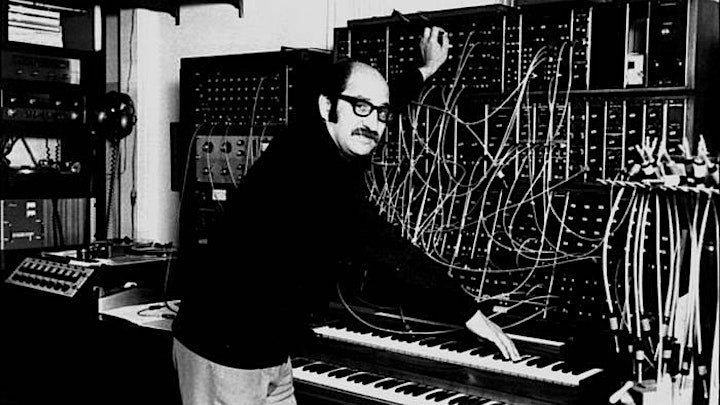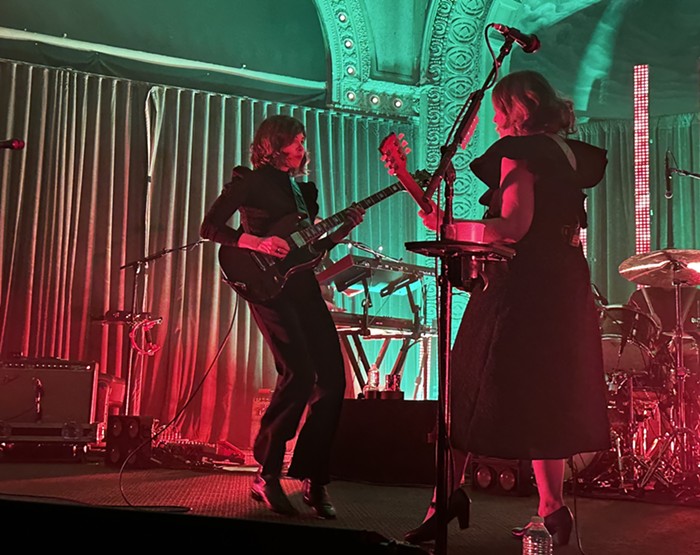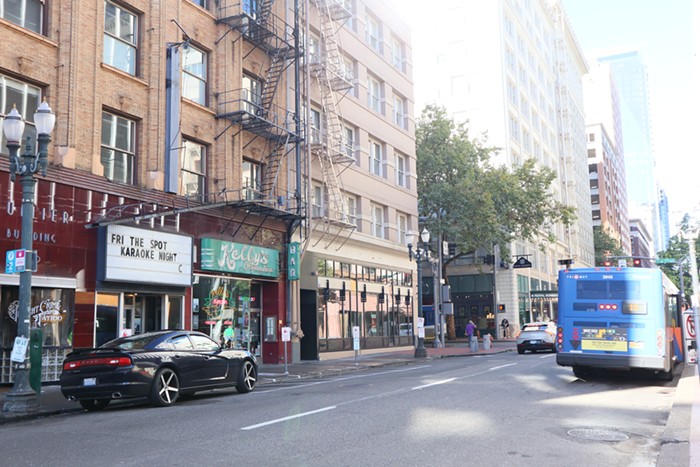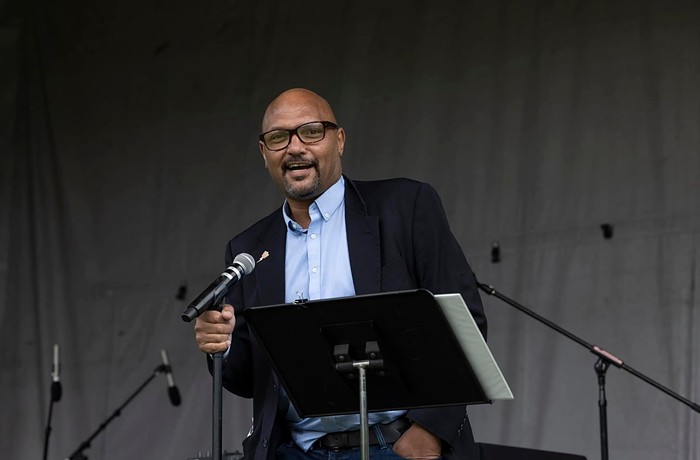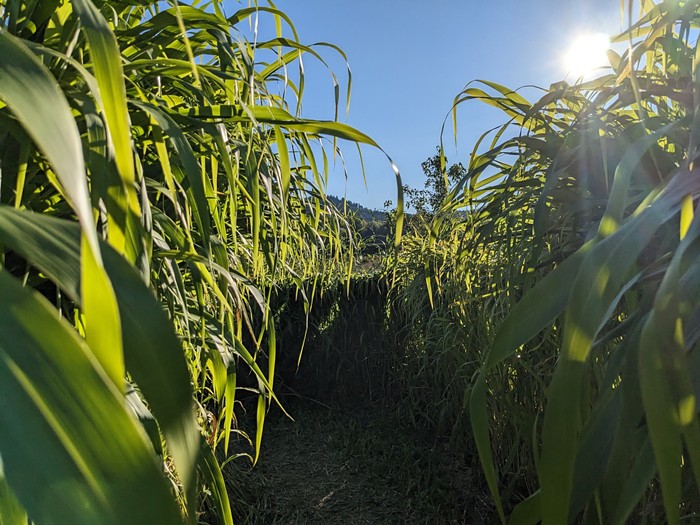Aside from Pink Floyd, few artists’ catalogs seem more tailored to score a laser show than the one left behind by electronic music pioneer Mort Garson. Within his varied projects you'll hear sounds that continue to surface in pop culture, influencing video game soundtracks, new age culture, and various offshoots of ambient, electronic and pop music.
The Canadian composer started out as a session musician and writer of late '50s / early '60s hits like Ruby & the Romantics’ “Our Day Will Come” and Brenda Lee’s “Dynamite,” but his career underwent a dramatic metamorphosis when he met Moog synthesizer inventor Robert Moog and began using Moog's machine to make music.
Fascinated by the wide range of sounds available from synths, Garson’s second act is littered with interesting and often odd projects: 1968’s The Wozard of Iz, an acid-fried satire based on The Wizard of Oz. 1969’s Electronic Hair Pieces, featuring synth covers of songs from the musical Hair. Twelve albums of zodiac-themed records. Occult-influenced albums under the names Lucifer and Ataraxia. Scores for left-of-center films and TV shows. His music was even part of televised transmissions from the Apollo 11 moon landing.
“The only sounds that go along with space travel,” he told the Los Angeles Times, “are electronic ones.”
Garson died in 2008, and these days his best-known work is his 1976 collection of compositions for growing plants, Mother Earth’s Plantasia, which New York City-based record label Sacred Bones reissued in 2019.
The release spurred a posthumous surge of interest in his work, and in subsequent years Sacred Bones released more reissues, including Journey to the Moon and Beyond: a collection of Garson’s space-age pop delights that includes his Apollo 11 accompaniment.
“Sometimes we sit around at the Sacred Bones office, shooting out wild, seemingly-unattainable, and often asinine goals for our own entertainment,” a label representative wrote on its social media account, "and every once in a while (honestly more often than is reasonable) we actually pull them off.”
View this post on Instagram
The post announced Sacred Bones' partnership with Seattle-based Night Howl Productions, on a custom-made laser light show survey of Garson's works, created and shown by the Oregon Museum of Science and Industry (OMSI) on September 21. Titled Laser Mort Garson: Plantasia on the Moon, the single-evening event also includes live sets by Portland experimental musicians Pulse Emitter and Elrond.
The post announced Sacred Bones' partnership with LA-based Night Howl Productions, on a laser light show—surveying Garson's works—created by Oregon Museum of Science and Industry (OMSI) Director of Space Science Education Jim Todd and projected by Justine Lacio at OMSI on September 21. Titled Laser Mort Garson: Plantasia on the Moon, the single-evening event also includes live sets by Portland experimental musicians Pulse Emitter and Elrond.
Be you a casual fan of beeps and bloops or an expert in synth lore, Laser Mort Garson is not one to miss. For the former and fans of the form, here are five of Garson’s finest tracks, any of which would be an excellent place to start your long, strange trip into the center of his sound:
“Plantasia”
Much of this remarkably consistent concept album, Mother Earth’s Plantasia, sounds like another galaxy’s Beach Boys or the classical music they listen to on Neptune’s moons. “Rhapsody in Green,” on the other hand, is slow and melancholy, giving in a humanistic feel that will resonate with anyone who has spent much time on Earth.
“Moon Journey”
If for no other reason than its historical value, be sure to check out Garson’s “Moon Journey,” a six-minute score that aired alongside the live TV broadcast of the 1969 Apollo 11 moon landing—which appears on Journey to the Moon and Beyond. Sometimes chunky and mechanical, other times otherworldly, it flickers with a sense of uncertainty, suspense and astonishment that mirrors its namesake event.
“Tarot”
Released under the alias Ataraxia, The Unexplained is one of Garson’s works that is heavily influenced by his interest in the occult. The result is music that is much darker than his plant- and space-songs, and more akin to synth-rock or a classic horror movie soundtrack.The bracing opening track, “Tarot,” is one of the most stylistically varied in his catalog—and that's saying something!
“Cathedral of Pleasure”
In 2020, Sacred Bones Records supplemented its Garson reissue campaign with a collection of odds and ends from across his career called Music from Patch Cord Productions. As a result, the compilation bounces around from style to style, from baroque bleep-bloops to robot funk to commercial projects and beyond. The sensuous spoken word and choral vocals of “Cathedral of Pleasure” are so ‘70s, they carry Garson’s smooth tones to an entirely different and unexpected place.
“Bamboo City”
In 1970, filmmaker Skip Sherwood asked Garson to score his movie Didn’t You Hear? Fifty years later, Sacred Bones reissued the soundtrack, which not only provides accompaniment to what’s happening on screen, it also documents Garson’s works in the months after he discovered the Moog. The music here is raw and exploratory. Even if you don’t have the film to go along with it, it’s fun to make up your own story.
Laser Mort Garson: Plantasia on the Moon shows at OMSI, 1945 SE Water, Sept 21 8 pm, $35, tickets here, all ages, w/ Elrond, Pulse Emitter
